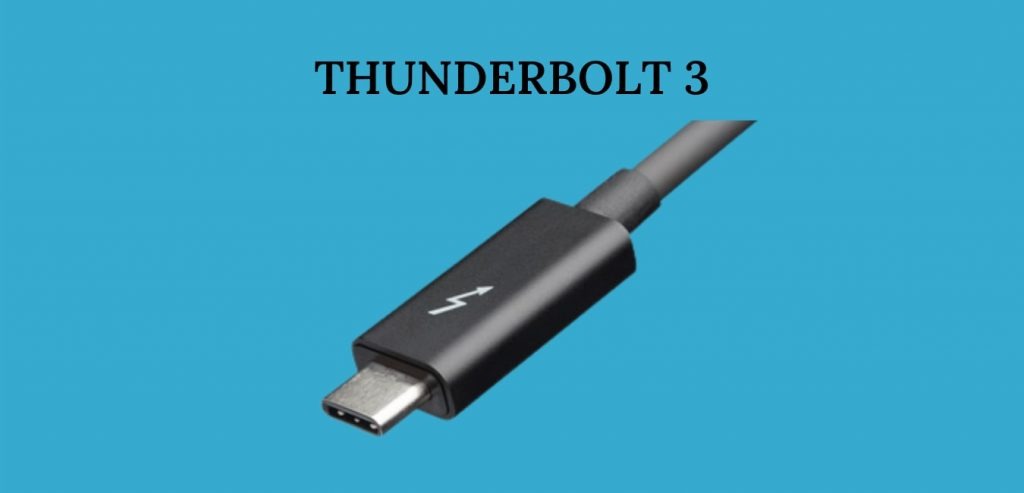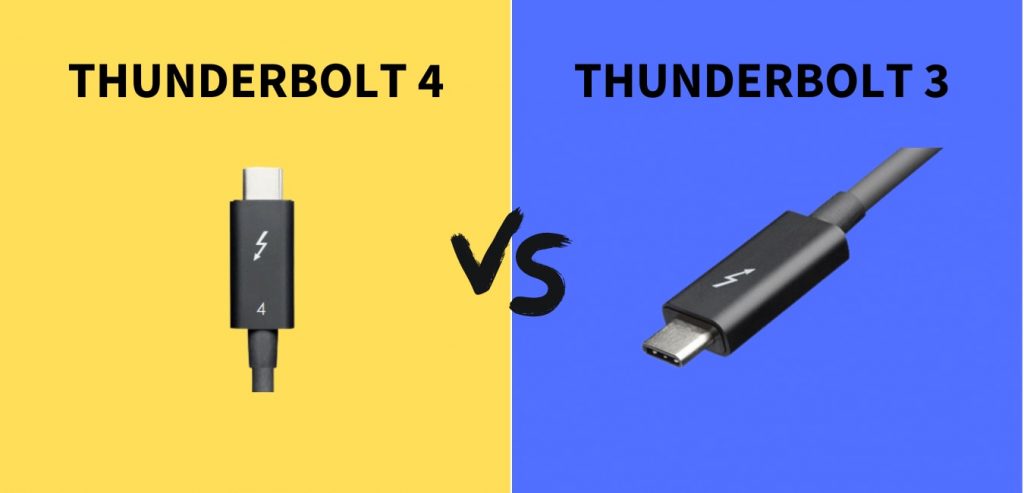Thunderbolt 4 Vs Thunderbolt 3 is the latest in the tech-war arena. This is not surprising as the connection technology appears to be snowballing into being ‘bigger and better with time. With the high-speed data transfers being the call of the hour, the latest launch in new devices always garners more attention. For many, the forward and backward compatibility itself is a ‘matter of great consideration.’ However, the launch of various new technologies like USB-A, USB-C, USB-4, Thunderbolt-3, and Thunderbolt-4 can only make it hard to decide. Nevertheless, we are here to offer you a better insight into the thunderbolt 4 Vs 3 debate.
The chronology of the USB connector is rather interesting. The earlier connector in the ancient machines comprised of fierce-looking teeth, and the cables were ‘complicated.’ However, with the launch of the USB port or the Universal Serial Bus, making connections was never the same. But, the USB itself has undergone massive leaps in its ‘refurbishments’ to offer the user ease of use. Let us take a look at the various USB ports over the years:
Type-A: This was the thin rectangular type and was the most popular among the USBs. Usually, the plug-ins were never easy as they always fell upside down the first time you tried.
Type-B: This was the square connector that was used for the attachments of Printers and USB docking stations.
The Micro and Mini USBs: Best for smaller devices like Mobile phones and was unidirectional in its purpose.
Type C: This is the latest in the USBs and is oval. It is small and reversible but is quite confusing for the users as well.
The Thunderbolt: Not exactly a USB, but it utilizes the Type-C connection standards.
Thunderbolt 4

Launched about four years ago in CES 2020, the Thunderbolt 4 is based on Intel’s 11th Gen Core processor. The thunderbolt USB 4 vs thunderbolt 3 soon grew the talk of the town, at least in the tech circles. However, with the launch of the Tiger Lake-based computers that also feature the USB 4 connectivity, the confusion saw no end. But the real catch is that the all-new Thunderbolt 4 is all about minimum requirements compared to catering to speed. To make matters worst or more ‘sophisticated, to put it mildly, sometimes both USB 4 and Thunderbolt 4 featured upon the ‘same port’! Before we plunge into deeper details, let us take a look into ‘how the Thunderbolt 4’ managed to conquer the current ‘scheme of things.
The Thunderbolt is a combination of DisplayPort, and PCI Express technology rolled into one. This results in a sigma cable that can drive high-resolution display and speedy data transfers as well at the rate of 10Gbps. Soon arrived the Thunderbolt 2, which offered bandwidth of 20Gbps and a DisplayPort 1.2. This resulted in an interface ability of a video signal of 4K display. To make things all the more exciting, the Thunderbolt 3 arrived on the scene with a double data rate of 40Gbps. This new port no longer required the mini display port and opted for the USB-C port instead. With an added advantage of 100 watts of power via the USB Power delivery, this port could be used to charge the mobile phone, laptop, and other USB devices. This also bought about the Thunderbolt networking along with a 10Gbps Ethernet. The apparent difference between thunderbolt 3 and 4 is not evident at first glance. But it does offer quite a few advantages such as:
- It comprises double the minimum video and data transfer requirement as compared to that of Thunderbolt 3.
- The Thunderbolt 4 can send a video signal of two 4K displays or one 8K display.
- The data rate is an impressive 32 Gbps.
- This port also comprises better peripherals.
- Has better wake from sleep capabilities and longer cables.
Also Read: Best Laptop Under 40000 in India 2021
The Thunderbolt 3

To understand the massive thunderbolt 3 vs thunderbolt 4 confusion, we need to understand each of these separately. Slowly and rather sneakily, the Thunderbolt 3 began to feature in our devices. At a certain point, this was the most advanced of the ports available for our devices. This was mainly because it could transfer data up to the speed of 40Gbps, excellent video output, and immense power delivery. However, one must bear in mind that the transfer rates greatly depend upon the device type, system configuration, external drives, and other such factors. The Thunderbolt 3 was eight times faster than the USB 3.2 Gen 1 and twice as fast compared to the USB 3.2 Gen 2X2. In a nutshell, the Thunderbolt 3 is comprised of the following features when compared to the USB 3.2:
- With an impressive speed of 40 Gbps, reversible data transfers were easy.
- It could easily be connected to the various USB 3.2 devices.
- This was perfect for faster data transfers and video.
- Could transmit up to dual 4K video using a single cable.
Also Read: Best Laptop Under 25000 in India 2021
Thunderbolt 4 Vs Thunderbolt 3: What Is The Difference Between Thunderbolt 3 And 4?

Let us take a closer look at the difference between Thunderbolt 3 and 4. This will help us put things into a better comparative analysis:
FEATURES | THUNDERBOLT 3 | THUNDERBOLT 4 |
Universal Simplicity | A single universal port | A single universal port |
Maximum Performance | 40 Gbps | 40 Gbps |
Video Requirement | One 4K display | Two 4K displays |
PC Data Requirement | USB 3.2-10 Gbp/s | USB 3.2-10 Gbp/s |
Minimum PC Port Power | 15 W | 15 W |
Reliable Connectivity | USB 4 Specification: Compatible | USB 4 Specification: Compliant |
Hub Technology Support | No | Yes |
USB 3 Tunnel | No | 10 Gb/s |
DP/DP Tunnel | DP 1.2 (HBR 2)/1 Display | DP 1.4a(HBR3)/2 Display |
Device Wake | Optional | Yes |
Thunderbolt 4 Vs Thunderbolt 3: The Conclusion
Thunderbolt 4 Vs Thunderbolt 3 can be ‘irrelevant at first glance, but a closer look will offer the user a hoard of advantages:
- The Thunderbolt 4 connects various devices at a single hub.
- The cables are less expensive.
- This port can support two 4K displays instead of just one in the previous version.
- Is more reliable in comparison.
On a final note, one can analyze that the Thunderbolt 4 is here to stay and for the right reasons as well. It is for the users to be able to stay future-ready with the right tools in hand.